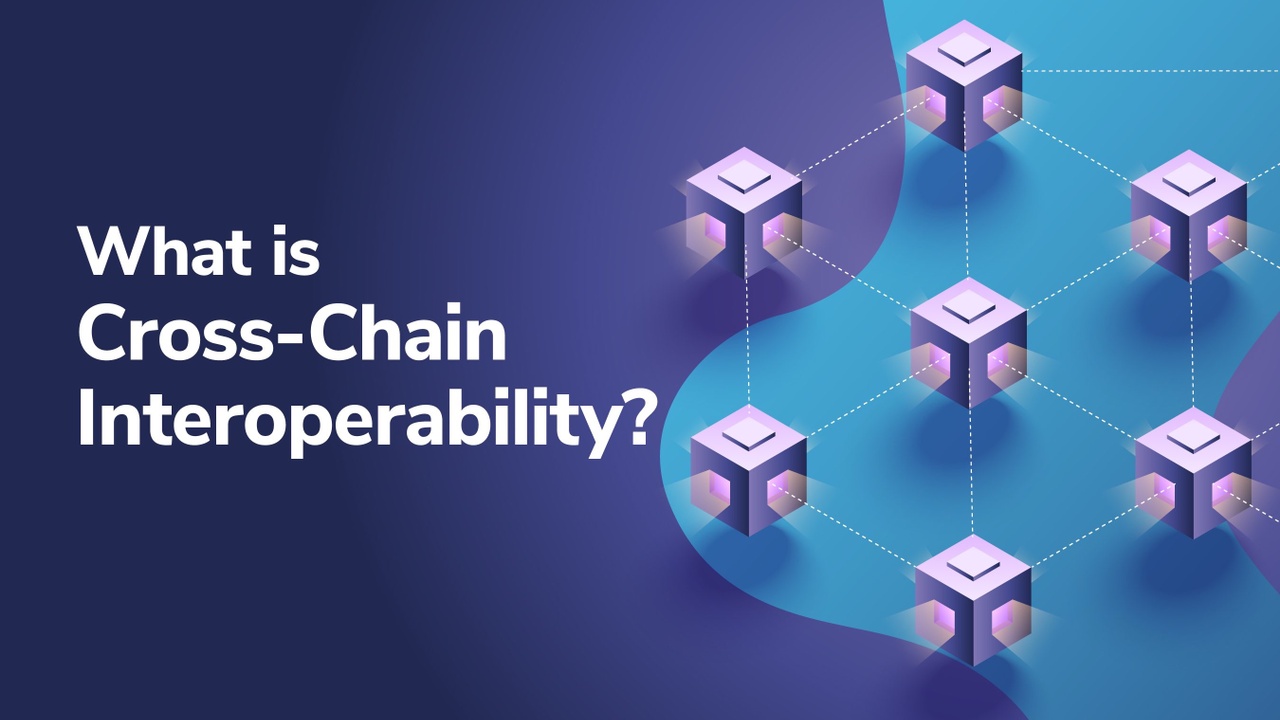
To say that blockchain interest has been warming up in the last few years would be an understatement. Rather, thousands of high-profile companies all around the world are already putting their money where their mouths are and are investing in blockchain technology. Nevertheless, the blockchain industry still has some growing pains to fully go mainstream. One of the largest challenges the blockchain industry needs to clear is achieving something known as blockchain interoperability. Put simply, different blockchains have a hard time talking to each other – something oftentimes referred to as ”cross-chain communication”.
So, what exactly is the issues related to lacking blockchain interoperability, and why do we even want cross-chain compatibility to begin with? This article explains how blockchain bridges and other blockchain interoperability solutions provide added value to both consumers, businesses and the blockchain industry as a whole. This article goes in-depth of the issue of realizing cross-chain communication and greater blockchain interoperability. Although we will go into all the different details of this issue, it fundamentally relates to allowing blockchains to interact with each other. This theoretically means blockchains can leverage each others’ strengths rather than need to compete for users. Nevertheless, read on to learn more about the benefits of blockchain interoperability and why this is important for the future of blockchain.
If you want to learn more about the blockchain ecosystem as a whole, you should make sure to enroll in Ivan on Tech Academy. Ivan on Tech Academy is a premier online academy for blockchain education, and offers dozens of world-class blockchain courses. Learn from experts and deepen your existing knowledge, get started using blockchain, or even change careers, which with Ivan on Tech Academy has already helped many others!
What is Blockchain Interoperability?
Put simply, blockchain interoperability refers to allowing blockchains to communicate with each other. Although the blockchain industry is oftentimes referred to as a coherent sector, in practice different blockchains can differ wildly. Moreover, this has sometimes given rise to blockchain and crypto tribalism, as well as Bitcoin maximalists. With that said, however, we need to recognize that the case for blockchain interoperability lies in allowing blockchains to work with each other. This could mean allowing information or value to move seamlessly between different blockchains. So, why do we even want this?

It comes down to the fact that various blockchains are purpose-built for various use cases and purposes. As such, they make different tradeoffs relating to e.g. their degree of decentralization, throughput, security, or the specific features. For example, a theoretical blockchain might sacrifice some decentralization in order for a faster experience, or transaction throughput. Another might sacrifice features or flexibility in exchange for greater security. Having a vibrant ecosystem of different blockchains specialized in different tasks inherently gives the ecosystem greater flexibility.
In fact, one could argue that this is preferable to having a single blockchain standard that becomes a ”jack of all trades, master of none”. However, blockchain interoperability is absolutely crucial to realizing a practical vision of connecting different blockchains. If not, blockchains risk going from innovative and secure distributed information ledgers to becoming competing, closed-off ”information silos”. This is especially the case as the industry continues to grow, which means we can expect the number of blockchains to continue to grow. Blockchain interoperability could solve this potential issue, and allow information to flow freely between blockchains. If fully realized, this would break down the barriers between different blockchain ecosystems and provide added value for the industry as a whole.
Why Do We Need Blockchain Interoperability and Cross-Chain Compatibility?
Blockchain interoperability, sometimes referred to as cross-chain compatibility, is seeing a lot of interest these days. However, after going through what actually constitutes blockchain interoperability, why then do we need cross-chain compatibility? Well, the answer stems from how blockchain technology was originally conceived, and how we expect it to work for us. Fundamentally, a blockchain can be understood as a digital distributed ledger technology (DLT) that records and stores information across a network of computers.
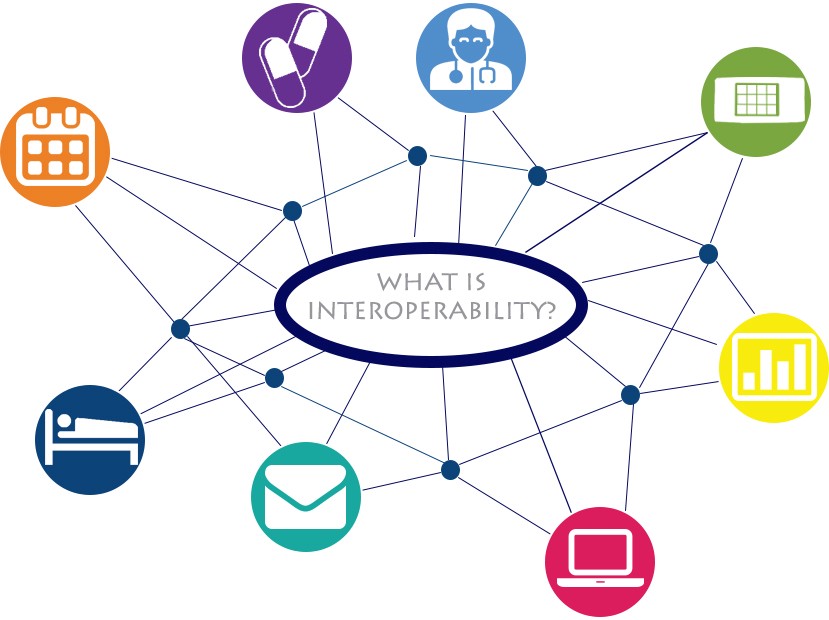
Essentially, this system’s (or blockchain’s) distributed nature makes it exceedingly hard, if not impossible, to attack or override the system. A blockchain generally stores information or verifications in ”blocks” – hence the name – which are, therefore, immutable. In addition to all of this, blockchains are also generally programmable. However, the level to which they are programmable differed wildly. For example, as we break down in our Bitcoin vs Ethereum article, Bitcoin is fairly limited – whilst Ethereum and Solidity (basically ”Ethereum code”) – are much more flexible for certain purposes, and can underpin decentralized finance (DeFi) projects and decentralized applications (dApps). Nevertheless, there are many other competing blockchains. Binance Smart Chain, for example, relatively recently rose to prominence, and the Polkadot ecosystem has similarly been growing at breakneck speed.

As such, it’s clear that we are entering an age of many different prominent blockchains. Consequently, there is a need for blockchain interoperability and cross-chain compatibility. These different blockchains are not natively integrated with each other, meaning lack of compatibility effectively makes them competing. Without cross-blockchain interoperability, the blockchain industry would risk becoming fragmented. This issue becoming bigger as more people get into crypto and begin using blockchain-based services. Without blockchain interoperability, people risk becoming ”locked” into using certain blockchains. To avoid this, we want to achieve blockchain interoperability through so-called ”blockchain bridges”.
Background to Blockchain Bridges
Before we go into details of some blockchain interoperability solutions, let’s look at the background to cross-chain compatibility and ”blockchain bridges”. As we’ve previously indicated, the issue giving rise to these can essentially be summarized as incompatibility between blockchains. So, how did we get here? Well, a crucial part of understanding blockchain interoperability – or lack thereof – is to understand the broader blockchain context.

Put simply, the blockchain industry is still in its infancy. Much like the internet in the nineties, most people are still unaware of the transformational potential held by the blockchain. We’ve previously covered how experts expect blockchain technology to be an integral part of the fourth industrial revolution, ”Industry 4.0”. If you want to join in this fourth industrial revolution, be sure to join the over 30,000 students who have already enrolled in Ivan on Tech Academy, and taken some of the cutting-edge blockchain and cryptocurrency courses available on there!
Moreover, we already see a lot of blockchain technology adoption across different sectors. Crypto adoption among payments services is booming in 2021, with PayPal offering Bitcoin payments and other financial behemoths finally adopting cryptocurrencies and blockchain technology. Blockchain technology and NFTs is making a big splash in both the art world, the music industry, and in sports. Additionally, smart contract blockchains are revolutionizing how people can do finance, with dApps just representing the tip of the iceberg. Furthermore, NFT marketplaces have begun to pop up all over, as blockchain-based non-fungible tokens similarly gain more widespread adoption and solutions like MetaMask become more commonplace. As such, it is plain to see that the blockchain industry is in dire need of blockchain interoperability solutions. A practical realization of greater blockchain interoperability is that of blockchain bridges. So, what are they?
What are Blockchain Bridges?
Today, it seems clear that the future is one of many different coexisting blockchains, rather than one with a single global ”Blockchain” to rule them all. Granted, Bitcoin is still the largest cryptocurrency by market capitalization, and so it may also remain. Nevertheless, that doesn’t stop other blockchains from emerging and bringing added value to the industry. For example, just imagine a world where the notion of blockchains and cryptocurrency never evolved beyond the Bitcoin blockchain. This would likely mean that there wouldn’t be any dApps, no DeFi industry, no NFTs, and so on.
As such, it is understandable that we want different blockchains to keep emerging. However, it is also evident that we want efficient means of cross-chain communication, such as through ”blockchain bridges”. If blockchain technology is truly going to go mainstream and achieve broad adoption, the infrastructure needs to be ready to serve everyone’s needs. This is why blockchain bridges are utterly necessary to bridge the existing divides between different blockchains and crypto tribes. So, then, what is a blockchain bridge in the simplest possible terms?
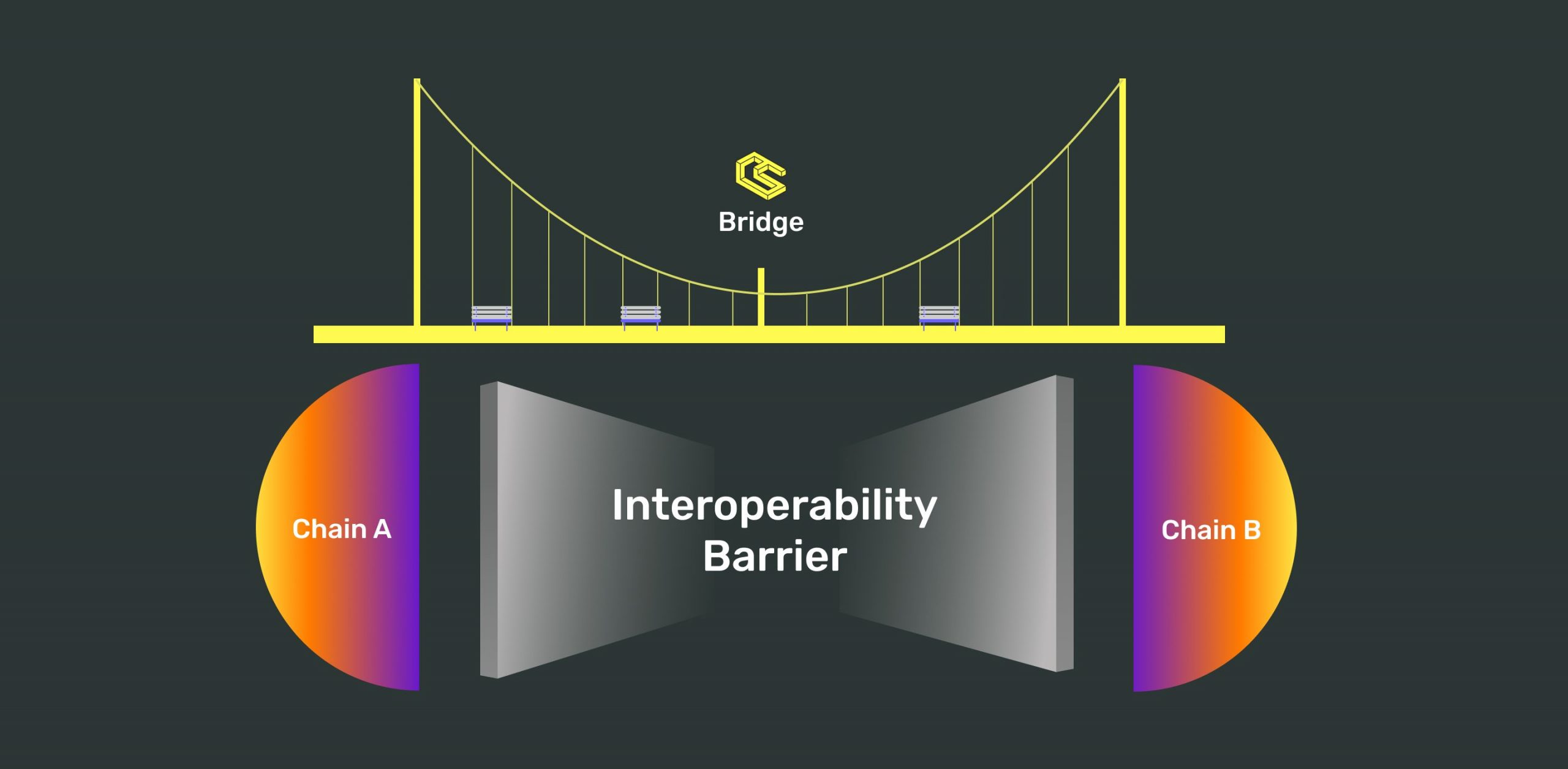
Well, a blockchain bridge is a connection between two or more blockchains, and a practical realization of blockchain interoperability. The blockchain bridge, or this connection, allows for the transfer of information, data or tokens (and subsequently value) between the different blockchains. This provides ease-of-use for consumers. It also allows dApps or any party using different blockchains to leverage certain blockchains’ strengths while avoiding locking themselves in. There are various real-world examples of blockchain bridges just like this. For example, we’ve previously covered Rootstock, or RSK. This connects to the Bitcoin blockchain through the use of a side chain, and essentially makes Bitcoin more useful and flexible – and there’s also things like ”Wrapped Bitcoin”.
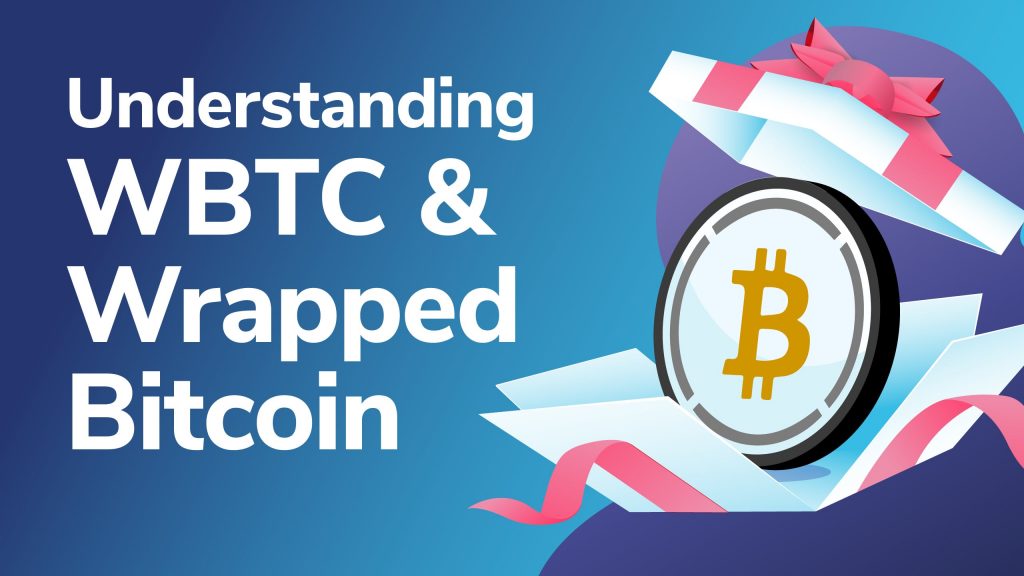
Different Cross-Chain Communication Methods
There are a lot of different blockchain companies trying to solve the issue of blockchain interoperability, by creating different types of blockchain bridges. Although in no way exhaustive, we’ve compiled a list of some different cross-chain communication methods in order to illustrate how some approach blockchain interoperability. If you want to learn more about blockchain interoperability, cross-chain compatibility, or communication in general, keep an eye on the Ivan on Tech Academy Blog, which publishes daily blockchain-related articles – completely for free!
- Relays
Relays enable blockchain interoperability through verifying events and block headers on different chains with something known as – you guessed it – ”relays”. Essentially, this means a contract on one chain (Chain A) is able to notice and understand changes on another chain (Chain B) by being a light client on Chain B. An interesting use case of this, albeit a historically expensive one to operate, is that of BTCRelay.
- Atomic Swaps
Another way to bridge different blockchains is through something known as atomic swaps. In layman’s terms, an atomic swap allows users to trade one cryptocurrency for another. This is done through a peer-to-peer transaction known as a Hashed TimeLock Contract (HTLC), which lets the user coordinate a cryptocurrency transaction on one blockchain with a cryptocurrency transaction on another. This can be compared to ”wrapping” cryptocurrencies. Atomic swaps work with the exchange of digital assets.

- Merged Consensus
Merged consensus enables ”native” blockchain interoperability and cross-chain communication but needs to be built into a blockchain from the start. Merged consensus allows two-way blockchain interoperability through the use of a relay chain. Real-world examples of this include Ethereum 2.0 and Cosmos, which both look to employ merged consensus. This is something we’ve touched on before regarding Ethereum 2.0 and congested networks.
Summarizing Blockchain Interoperability and Cross-Chain Communication
All of this shows us that the blockchain industry needs blockchain interoperability solutions and fixes for cross-chain communication in order to prosper and realize its full potential. As such, it should only be natural to strive for more compatibility between different blockchains, to make the blockchain industry as a whole more resilient.
The oft-repeated adage ”no man is an island” is just as true when it comes to people as when it comes to blockchains. Granted, blockchains do not necessarily or functionally need blockchain interoperability. However, bridging different blockchains arguably allows developers to realize greater value than they otherwise would. In fact, one could argue that the value of interconnecting blockchains makes the whole ”greater than the sum of its parts”. As such, blockchain interoperability is necessary in order to connect various blockchain projects and make sure they are all able to communicate with each other.
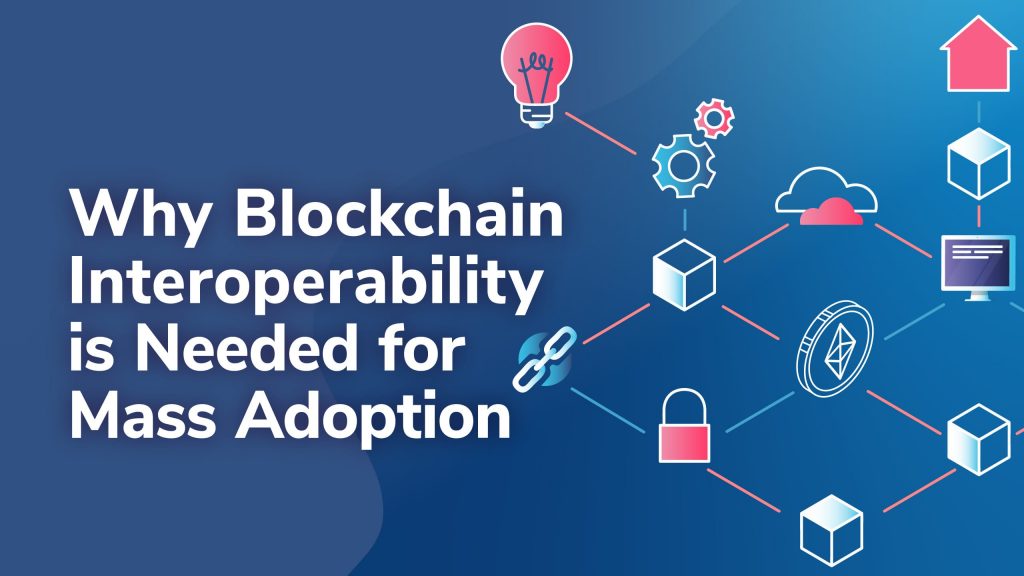
If you want to learn more about the blockchain basics, cryptocurrency fundamentals, or just keep up to date with one of the most interesting industries in the world, be sure to join Ivan on Tech Academy. On our blog, we’ve previously written about how blockchain interoperability matters for mass adoption. Ivan on Tech Academy offers unrivaled insights, and the opportunity to supercharge your blockchain career in a matter of courses. What are you waiting for?
